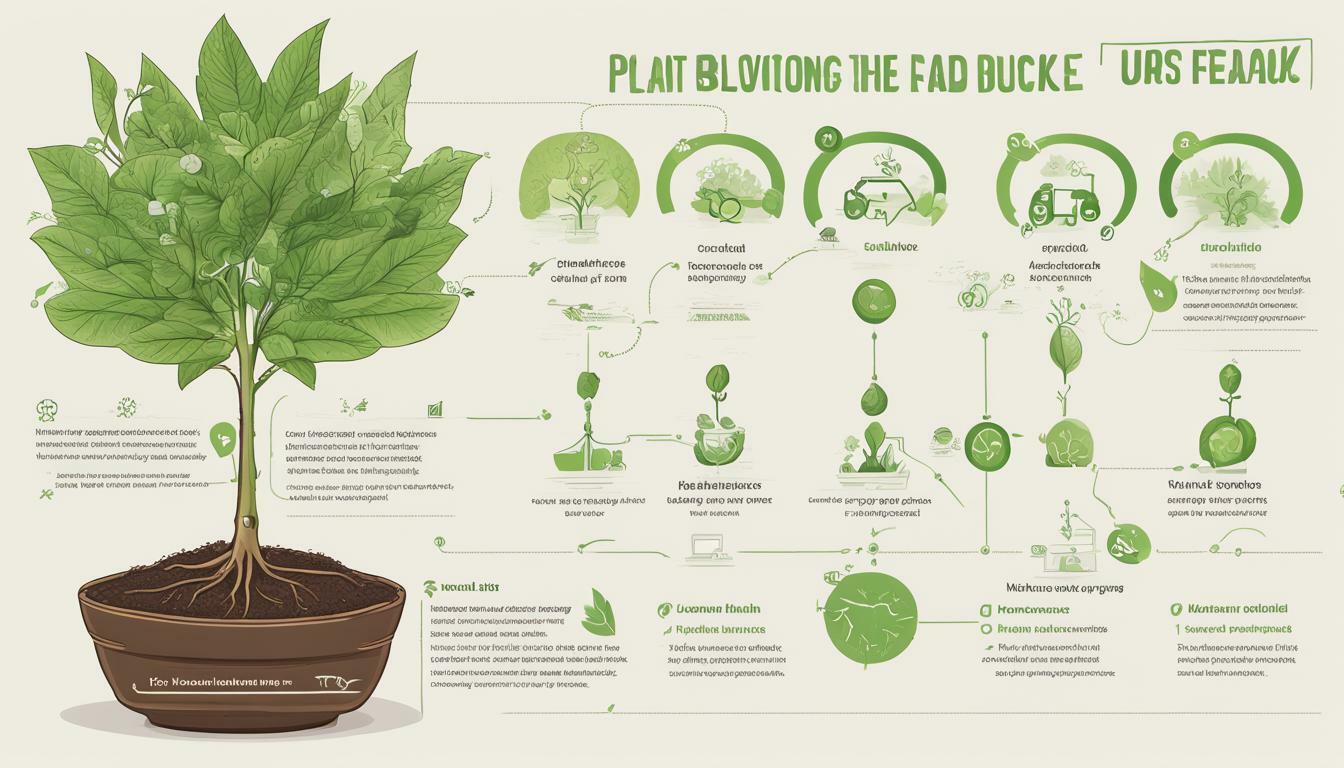
As businesses strive for continuous improvement and innovation, listening to the market becomes essential. Understanding customer needs and preferences is key to developing products that meet and exceed expectations. This is where user feedback plays a crucial role in product evolution. By gathering and analyzing feedback from customers, businesses can make informed decisions about product enhancements and align their solutions with market demand.
In this article, we will explore the importance of user feedback in product development and evolution. We will delve into different feedback channels and methodologies and discuss effective strategies for incorporating feedback into the product development process. Finally, we will highlight the significance of measuring the success and impact of user feedback on product innovation.
Key Takeaways
- The market is constantly evolving, and businesses need to keep up with changing customer needs and preferences
- User feedback is a valuable source of customer insights that can guide product enhancements and development
- A user-centric approach to product evolution leads to more customer-centric solutions
- Effectively gathering, analyzing, and implementing user feedback requires a systematic approach
- Measuring the success and impact of user feedback is key to continuous improvement and innovation
Understanding the Market: Market Research and User Feedback
One of the key components of a successful product is understanding the market it serves. This requires gathering insights from both market research and user feedback. Market research provides critical information about the overall landscape, helping businesses identify market trends, potential opportunities, and what their competitors are doing.
However, user feedback is just as important, if not more so, as it provides a direct line to the needs, preferences, and pain points of the end user. By actively listening to their customers, businesses gain a better understanding of what resonates with their target market, allowing for more informed product development decisions.
Moreover, incorporating user feedback into the product development process reinforces the idea that the customer is at the center of everything a business does. It is a clear indication that a company values its customers and is committed to delivering products that meet their needs.
Overall, the importance of user feedback and market research in understanding the market cannot be overstated. By actively listening to the market and utilizing customer insights, businesses can drive product innovation and development, resulting in more successful products that better align with customer needs.
The Power of Customer Voices: Feedback-driven Product Innovation
Customer insights are a powerful tool for businesses seeking to innovate and improve their products. Feedback-driven product innovation involves listening to the market and incorporating user feedback into product development processes. By leveraging customer insights, businesses can create more customer-centric solutions that better align with user needs.
Successful products are often those that have been improved through user feedback. For example, social media platforms like Facebook and Twitter have evolved significantly based on user feedback. These platforms initially started as basic communication tools but have since been adapted to suit user preferences and needs. Features such as hashtags, news feeds, and live videos were all introduced based on user feedback, making them more engaging and user-friendly.
The key to successful feedback-driven product innovation is to create a feedback loop that is iterative in nature. This involves regularly gathering user feedback, analyzing it, and incorporating it into the product development process. By doing this, businesses can stay ahead of the competition, anticipate changing user needs, and create more effective solutions.
Incorporating User Feedback: The User-Centric Approach to Product Evolution
The user-centric approach is all about keeping the customer at the center of the product development process. By incorporating user feedback throughout the product lifecycle, businesses can create products that better meet customer needs and expectations. This approach can also lead to increased customer loyalty and brand advocacy, ultimately driving business growth.
Listening to the market is key to implementing a user-centric approach. By gathering and analyzing user feedback, businesses can identify pain points and areas for improvement. This allows for more informed decision-making and targeted product enhancements that better align with customer expectations.
One of the most effective ways to incorporate user feedback is through an iterative feedback loop. This involves soliciting feedback early and often, testing new features and enhancements with customers, and continuously iterating based on their feedback. By involving customers in the product development process, businesses can create solutions that truly meet their needs.
The role of user feedback in the user-centric approach cannot be overstated. By leveraging customer insights, businesses can create better products, improve customer satisfaction, and drive business success. By listening to the market and prioritizing user feedback, businesses can create a culture of continuous improvement that puts the customer first.
Feedback Channels: Gathering and Analyzing User Feedback
Successful product evolution hinges on the collection of valuable user feedback. Gathering, analyzing, and leveraging this feedback is essential to designing and innovating products that meet customer needs. There are several channels for collecting user feedback:
- Surveys: Surveys are a popular method for gathering user feedback. They can be designed to collect quantitative and qualitative data, making them a versatile tool for product development.
- Focus groups: Focus groups are small, moderated discussions with representative users. They are best suited for qualitative research and can provide valuable insights into user needs and desires.
- User testing: User testing involves observing users interacting with a product. It can be conducted in a usability lab, remotely, or in the field. User testing provides qualitative feedback on product usability and helps identify pain points and areas for improvement.
- Social media: Social media is an effective channel for collecting user feedback on products. Companies can monitor feedback on social media to identify trends, user sentiment, and areas for improvement.
Once feedback is gathered, it is important to analyze it to identify trends and prioritize areas for improvement. Qualitative feedback can be analyzed using techniques such as thematic analysis or sentiment analysis. Quantitative feedback can be analyzed using statistical methods such as regression analysis.
Overall, feedback channels play a critical role in product development. By using a combination of qualitative and quantitative feedback collection methods, companies can gain a comprehensive understanding of user needs and preferences. This knowledge can then be leveraged to design and innovate products that meet customer needs, driving business growth and success.
Overcoming Challenges: Addressing and Implementing User Feedback
While user feedback is essential for developing successful products, it is not without its challenges. One of the most significant challenges is collecting and implementing feedback effectively. Incorporating user feedback can be challenging, as it requires a deep understanding of the customer’s wants and needs, while also balancing the constraints of time and resources.
One way to overcome this challenge is to establish a systematic process for addressing and implementing feedback. This can involve creating a dedicated team responsible for reviewing and analyzing feedback and developing a roadmap for implementing changes. The team should prioritize the feedback based on the potential impact on the product and customer experience, and create a plan of action accordingly.
Another challenge is identifying and addressing conflicting feedback or feedback that may not align with the business’s goals. To address this challenge, it is essential to set clear goals and objectives for the product development process and consider feedback within this context. Additionally, conducting market research and gathering customer insights regularly can help identify and address conflicting feedback in a timely manner.
Finally, it is important to communicate with customers and keep them informed about any changes made based on their feedback. This can help build trust and loyalty, and show that their opinions are valued. It is also essential to measure the effectiveness of the implemented changes and use this feedback to iterate and improve continuously.
Overall, while addressing and implementing user feedback can be challenging, it is crucial for product development and customer satisfaction. By establishing a systematic approach and prioritizing feedback based on its potential impact, businesses can effectively incorporate user feedback into the product development process.
Measuring Success: Evaluating the Impact of User Feedback
As businesses continue to listen to the market and gather user feedback, it’s important to measure the success and impact of these efforts. Evaluating the effectiveness of feedback-driven product enhancements and their alignment with customer expectations can help businesses refine and improve their approach to incorporating user feedback.
One key metric for evaluating the impact of user feedback is customer satisfaction. By tracking and analyzing customer satisfaction ratings over time, businesses can gauge the effectiveness of their feedback-driven product improvements and identify areas for further development.
Another important measure is customer retention. A high level of customer retention can indicate that the product is meeting or exceeding customer expectations and that their feedback is being incorporated effectively.
Additionally, businesses can use metrics such as user engagement, conversion rates, and revenue growth to evaluate the impact of user feedback on their product. By regularly tracking and analyzing these metrics, businesses can gain a deeper understanding of how user feedback is driving product evolution and contributing to overall business success.
Overall, measuring the success of user feedback requires a combination of qualitative and quantitative analysis. By leveraging both types of data, businesses can gain a comprehensive understanding of the impact of user feedback on their product and ensure they are effectively listening to the market.
Conclusion
Listening to the market is critical for product evolution, and user feedback has a crucial role to play in this process. By understanding customer needs and leveraging their insights, businesses can continuously improve their products and stay ahead of the competition.
Implementing a user-centric approach to product development, incorporating feedback, and measuring its success are key strategies for achieving this goal. However, it’s important to note that addressing and implementing feedback comes with its own set of challenges. A systematic approach is necessary to ensure that feedback is properly leveraged.
Overall, the power of customer voices in shaping product innovation cannot be overlooked. By actively listening to the market and incorporating user feedback at every stage of product development, businesses can create more customer-centric solutions and ensure a successful product evolution.
FAQ
Q: How does user feedback contribute to product evolution?
A: User feedback plays a crucial role in product evolution by providing valuable insights and guidance for product enhancements. It helps businesses understand customer needs and preferences, allowing them to develop more customer-centric solutions.
Q: Why is market research important in gathering user feedback?
A: Market research is essential for gathering user feedback as it helps businesses understand their target market and identify potential customers. By conducting market research, businesses can gather insights from their target audience and use this feedback to improve their products.
Q: Can you provide examples of successful products that have been improved through user feedback?
A: Yes, there are numerous examples of products that have been improved through user feedback. For instance, social media platforms regularly incorporate user feedback to enhance their features and user experience. E-commerce companies also rely on customer feedback to improve their website functionality and optimize the online shopping experience.
Q: How can businesses actively incorporate user feedback into the product development process?
A: To actively incorporate user feedback, businesses should establish feedback loops and gather insights from various channels such as surveys, user testing, and customer support interactions. They should also prioritize and address customer feedback in a timely manner, ensuring that it informs their product roadmap and development decisions.
Q: What are some effective methodologies for gathering and analyzing user feedback?
A: Effective methodologies for gathering and analyzing user feedback include conducting surveys, organizing focus groups, analyzing customer support interactions, and monitoring social media platforms for customer conversations. It is important to use a combination of qualitative and quantitative feedback to obtain well-rounded insights.
Q: How can businesses overcome challenges when implementing user feedback?
A: To overcome challenges when implementing user feedback, businesses should establish a systematic approach. This includes defining clear feedback collection processes, prioritizing feedback based on its impact, and ensuring proper communication and collaboration across teams involved in product development.
Q: How can businesses measure the success and impact of user feedback?
A: Businesses can measure the success and impact of user feedback by tracking key metrics such as customer satisfaction scores, engagement levels, and conversion rates. They can also conduct follow-up surveys and analyze product usage data to evaluate the effectiveness of feedback-driven product enhancements.








